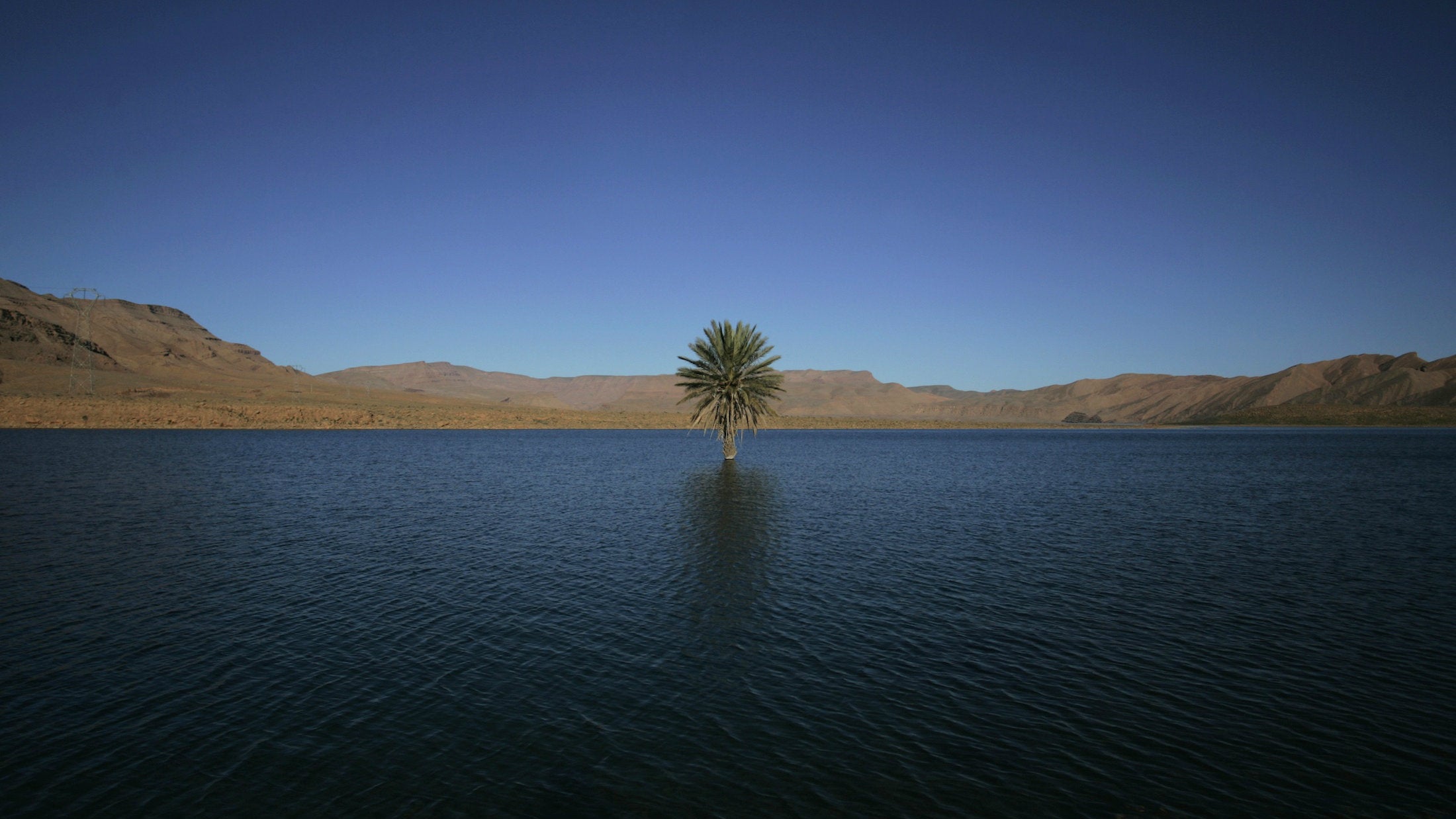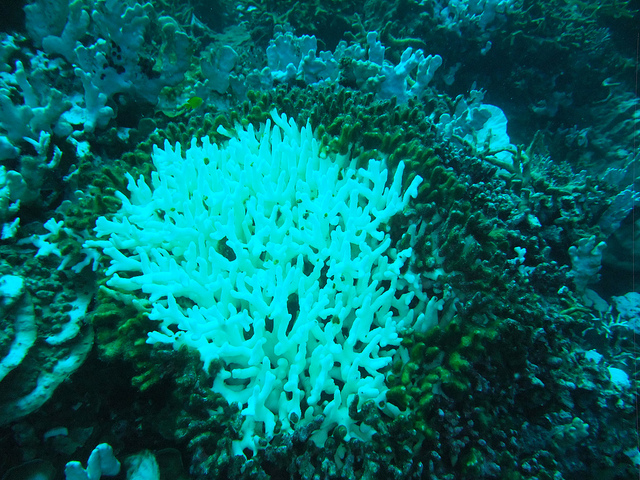Report on the 2024-2025 Western Australian Marine Heatwave and its Impact on Sustainable Development Goals
1.0 Introduction
This report details the unprecedented marine heatwave event in Western Australia between August 2024 and May 2025. The event, described by scientists as the “longest, largest and most intense” on record for the region, has caused catastrophic damage to coral reef ecosystems across a 1,500km stretch. These impacts represent a significant setback for the achievement of key United Nations Sustainable Development Goals (SDGs), particularly SDG 14 (Life Below Water) and SDG 13 (Climate Action).
2.0 Event Analysis and Severity
A consortium of state and federal scientists has confirmed the extreme nature of the heatwave, which resulted in the most severe coral bleaching recorded in Western Australia’s history. The analysis highlights a direct failure to meet global climate targets, with severe consequences for marine biodiversity.
2.1 Scientific Observations
- Duration and Intensity: The heatwave persisted from August 2024 to May 2025, subjecting reefs to prolonged thermal stress.
- Heat Stress Levels: The accumulated heat stress, measured in Degree Heating Weeks (DHWs), reached critical levels. Most reefs from Ningaloo north experienced at least 15 DHWs, with some Pilbara coast reefs hitting 30 DHWs. A level of 8 DHWs is considered sufficient to cause coral mortality.
- Geographic Scope: The impact zone stretched 1,500km from the World Heritage-listed Ningaloo Reef to the remote Ashmore Reef.
3.0 Impacts on Sustainable Development Goals (SDGs)
The coral mortality event directly undermines progress on several SDGs, demonstrating the interconnectedness of environmental health and sustainable development.
3.1 SDG 14: Life Below Water
The primary impact of the heatwave is the severe degradation of marine ecosystems, a direct contradiction to the objectives of SDG 14 to conserve and sustainably use the oceans, seas, and marine resources.
- Mass Coral Mortality: On some surveyed reefs, over 90% of corals either bleached or died. Bleaching and death rates across the affected region ranged from medium (11-30%) to extreme (>90%).
- Ecosystem Collapse: The Rowley Shoals, previously considered a “hope spot” and resilient to global heating, suffered extensive damage, indicating that even remote and once-pristine ecosystems are now critically vulnerable.
- Biodiversity Loss: The death of coral reefs leads to a cascading loss of associated marine life, threatening the entire food web and marine biodiversity which SDG 14 aims to protect.
3.2 SDG 13: Climate Action
The event serves as a stark indicator of the consequences of insufficient global climate action. Scientific consensus attributes the heatwave’s severity to climate change.
- Attribution to Global Warming: Experts from the Bureau of Meteorology and CSIRO have confirmed that the event occurred in the absence of a La Niña pattern, leaving climate change as the primary driver. The summer of 2024-2025 saw the warmest ocean temperatures on record for the Australian region.
- Increased Frequency: The increasing frequency and intensity of such events prevent coral reefs from recovering. Reefs require 10 to 15 years for full recovery, a timeframe no longer available under current warming trends.
- Global Context: This regional disaster is part of a global bleaching event that has impacted over 80% of the planet’s coral reefs, underscoring the urgent need for global adherence to SDG 13 targets.
3.3 Socio-Economic Implications (SDG 8 & SDG 11)
The degradation of vital marine assets like the Ningaloo Reef threatens the foundations of regional economies and community well-being, impacting SDG 8 (Decent Work and Economic Growth) and SDG 11 (Sustainable Cities and Communities).
- Threats to Tourism and Fisheries: Coastal communities dependent on reef-based tourism and fishing face significant economic disruption and loss of livelihoods.
- Reduced Community Resilience: The loss of natural protective barriers and economic mainstays weakens the resilience of coastal communities to future climate shocks.
4.0 Response and Recommendations
4.1 Collaborative Action (SDG 17: Partnerships for the Goals)
In response to the crisis, over 100 scientists and marine managers from government agencies and universities convened in Perth. This collaboration exemplifies the multi-stakeholder partnerships required by SDG 17 to address complex global challenges.
4.2 Path Forward
To mitigate future events and work towards the SDGs, the following actions are imperative:
- Urgent Emissions Reduction: The primary recommendation from the scientific community is a drastic and immediate reduction in global greenhouse gas emissions to address the root cause of ocean warming, in line with SDG 13.
- Enhance Marine Protection and Monitoring: Continued and enhanced monitoring of reef health is essential to manage and support the resilience of the remaining coral ecosystems, supporting the conservation targets of SDG 14.
1. Which SDGs are addressed or connected to the issues highlighted in the article?
SDG 14: Life Below Water
- The article’s central theme is the devastating impact of a marine heatwave on coral reefs in Western Australia. It describes the mass bleaching and death of corals, which are fundamental components of marine ecosystems. This directly relates to the goal of conserving and sustainably using the oceans, seas, and marine resources. The article highlights the destruction of marine biodiversity, mentioning that “more than 90% of corals had either bleached or died” on some reefs, directly threatening life below water.
SDG 13: Climate Action
- The article explicitly identifies climate change as the primary driver of the marine heatwave. It quotes experts stating, “we are only left with climate change [as a cause]” and “The increased frequency of extreme and record-breaking ocean temperatures is associated with global warming.” The call to “reduce greenhouse gas emissions” as the key solution directly links the issue to the need for urgent climate action.
2. What specific targets under those SDGs can be identified based on the article’s content?
SDG 14: Life Below Water
- Target 14.2: By 2020, sustainably manage and protect marine and coastal ecosystems to avoid significant adverse impacts, including by strengthening their resilience, and take action for their restoration in order to achieve healthy and productive oceans. The article demonstrates a failure to meet this target, detailing the “most severe coral bleaching on record for Western Australian coral reefs” and noting that the frequency of these events gives reefs “little time to recover,” thus undermining their resilience and health.
- Target 14.5: By 2020, conserve at least 10 per cent of coastal and marine areas, consistent with national and international law and based on the best available scientific information. The article mentions that the heatwave affected protected areas like the “world heritage-listed Ningaloo” and the “Rowley Shoals,” which were previously considered a “hope spot.” This shows that even conserved areas are vulnerable, highlighting the challenges in achieving effective conservation under climate change.
- Target 14.a: Increase scientific knowledge, develop research capacity and transfer marine technology… in order to improve ocean health. The article is built upon the work of scientists and institutions like the “Australian Institute of Marine Science,” “CSIRO,” and the “Bureau of Meteorology.” The mention of “more than 100 scientists and marine managers” gathering to discuss the event and the use of specific monitoring metrics like “Degree Heating Weeks” exemplify the effort to increase scientific knowledge and research capacity.
SDG 13: Climate Action
- Target 13.1: Strengthen resilience and adaptive capacity to climate-related hazards and natural disasters in all countries. The marine heatwave is a climate-related hazard. The article shows the low resilience of coral ecosystems, stating, “The first time reefs bleach badly, the mortality tends to be quite high,” and they need “10 to 15 years to recover fully,” a time they are not getting due to the increasing frequency of events.
- Target 13.3: Improve education, awareness-raising and human and institutional capacity on climate change mitigation, adaptation, impact reduction and early warning. The article itself, by reporting on the scientific findings, contributes to awareness-raising. The coordinated monitoring by the “WA Coral Bleaching Group” and the special meeting of scientists and managers represent an increase in institutional capacity to understand and respond to climate impacts. The monitoring of “Degree Heating Weeks” serves as an early warning system for coral stress.
3. Are there any indicators mentioned or implied in the article that can be used to measure progress towards the identified targets?
Indicators for SDG 14 (Life Below Water)
- Percentage of coral bleached or dead: The article provides specific data, stating that on some reefs “more than 90% of corals had either bleached or died” and that bleaching ranged from “medium (11%- 30%) to extreme (greater than 90%).” This is a direct indicator of marine ecosystem health (Target 14.2).
- Geographic extent of ecosystem damage: The article specifies that the damage occurred across a “stretch that stretches 1,500km,” indicating the vast scale of the impact (Target 14.2).
- Ecosystem recovery time: The article mentions that reefs “need 10 to 15 years to recover fully,” which serves as a baseline indicator for resilience. The fact that they have “little time to recover” indicates a negative trend (Target 14.2).
Indicators for SDG 13 (Climate Action)
- Measure of accumulated heat stress: The article explicitly names the metric “Degree Heating Weeks (DHWs).” It provides values, noting that reefs reached “at least 15 DHWs, with some reefs off the Pilbara coast hitting 30DHWs,” far exceeding the 8DHW mortality threshold. This is a quantitative indicator of a climate-related hazard (Target 13.1).
- Frequency and intensity of extreme weather events: The event is described as the “longest, largest and most intense” marine heatwave on record for the region. The article also states that climate change is making these events “more frequent, more intense and more widespread,” which is a key indicator of climate change impacts (Target 13.1).
- Ocean temperature anomalies: The article notes that the “summer of late 2024 and early 2025 recorded the warmest ocean temperatures for the Australian region on a record going back to 1900.” This is a direct indicator of global warming (Target 13.1).
4. Table of SDGs, Targets, and Indicators
| SDGs | Targets | Indicators |
|---|---|---|
| SDG 14: Life Below Water | 14.2: Sustainably manage and protect marine and coastal ecosystems to avoid significant adverse impacts, including by strengthening their resilience. |
|
| 14.5: Conserve coastal and marine areas. |
|
|
| 14.a: Increase scientific knowledge and research capacity. |
|
|
| SDG 13: Climate Action | 13.1: Strengthen resilience and adaptive capacity to climate-related hazards. |
|
| 13.3: Improve education, awareness-raising and human and institutional capacity. |
|
Source: theguardian.com







